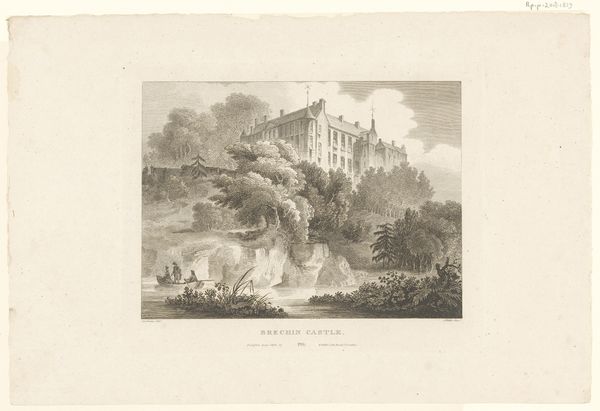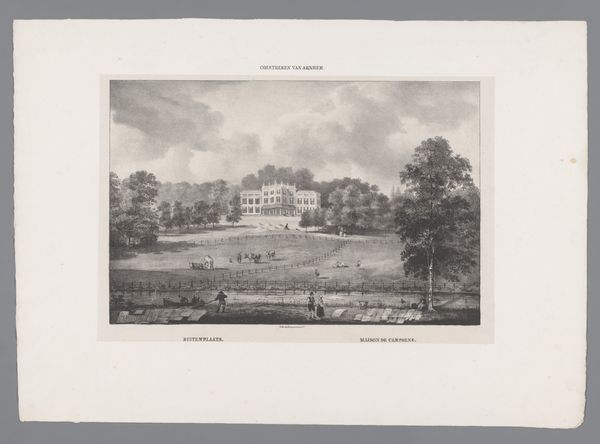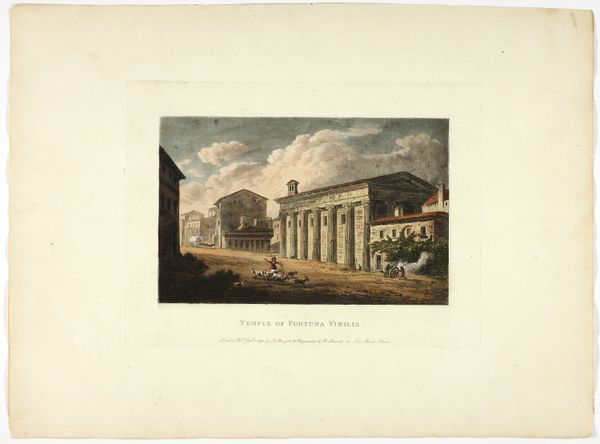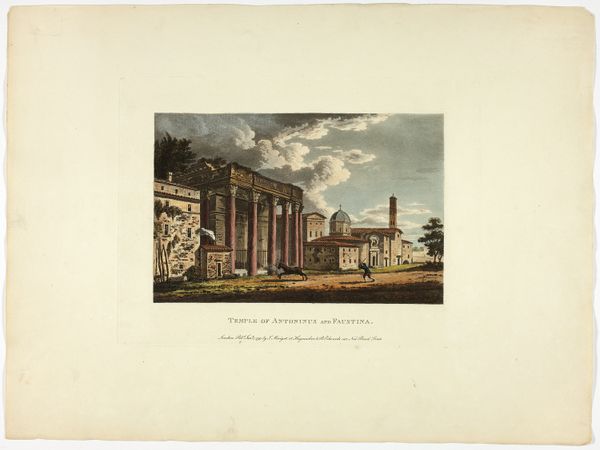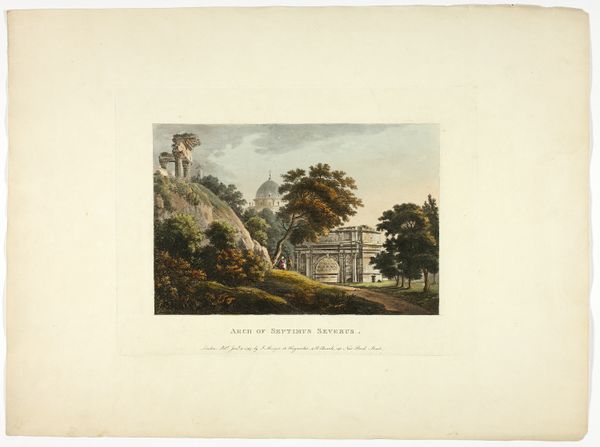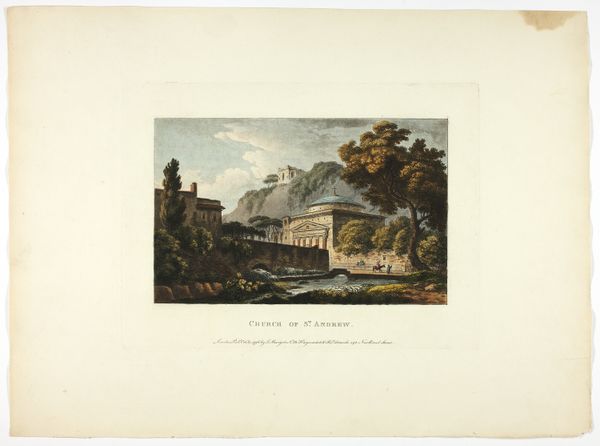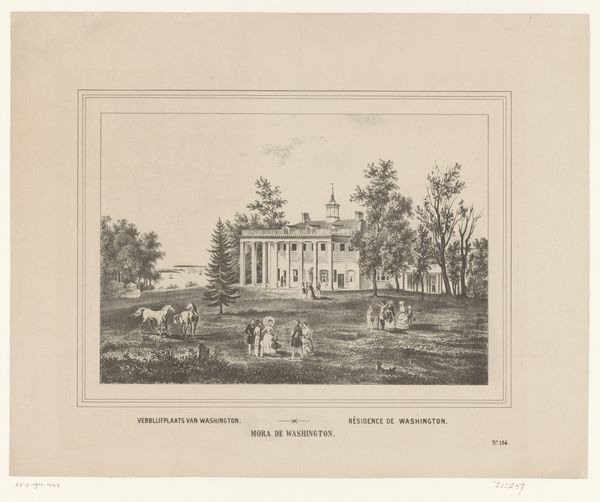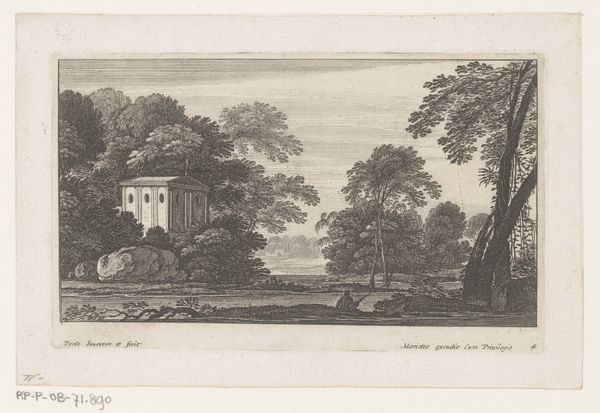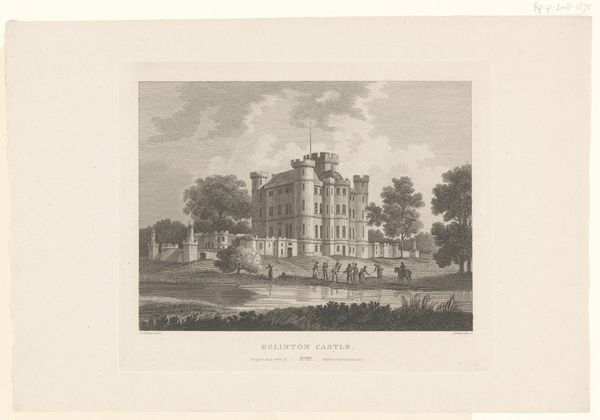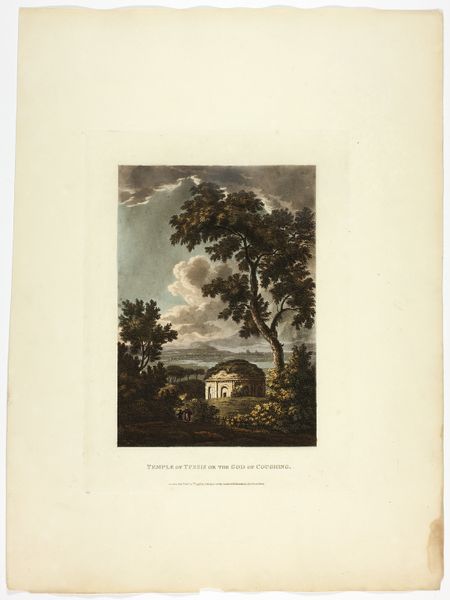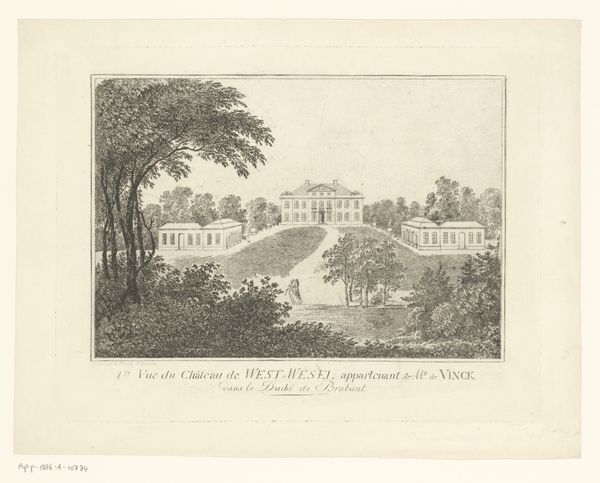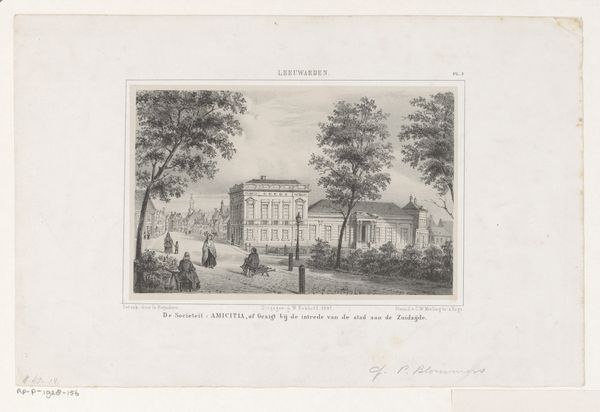
Temple of the God Rediculus, plate five from the Ruins of Rome Temple of the God Rediculus, plate five from the Ruins of Rome c. 1796
0:00
0:00
drawing, print, paper, watercolor
#
drawing
#
neoclacissism
#
water colours
# print
#
landscape
#
paper
#
watercolor
#
coloured pencil
#
watercolor
Dimensions: 330 × 448 mm (sheet)
Copyright: Public Domain
Editor: This is "Temple of the God Rediculus, plate five from the Ruins of Rome" by M. Dubourg, around 1796, made with watercolor and print on paper. It feels like a picturesque scene, almost like a stage set. The colours are so muted. What jumps out at you about this piece? Curator: Well, immediately, I think about the means of production of this image. This wasn't just a lone artist working in a studio. It’s a print, likely produced through a process of etching or engraving, then finished with watercolor. Consider the labour involved. It shows how printed images, which were more accessible than paintings, played a role in disseminating ideas about classical architecture and landscape. Editor: That’s interesting. So, instead of focusing on the beauty of the scene, you're drawn to how it was made and distributed? Curator: Exactly. The choice of watercolor is interesting, too. It mimics the look of high art while being much quicker and more easily reproduced than oil painting. How does that accessibility affect the perceived value of the image, compared to, say, a large oil painting of a similar subject? Think about who would have been consuming these images. What were they hoping to gain? Editor: I guess people wanted a taste of classical grandeur but on a budget? Or maybe as a way to show off their… cultured sensibilities without fully investing in a big expensive painting? Curator: Precisely! It blurs the lines between high art and accessible commodity, using readily available materials like paper and watercolor. It challenges what we typically value in art. Editor: I see what you mean. Thinking about it as a commodity really shifts the perspective. I’ll never look at watercolors the same way again! Curator: Good. That tension between artistry, access, and commerce is what makes this seemingly simple print so compelling to me.
Comments
No comments
Be the first to comment and join the conversation on the ultimate creative platform.
